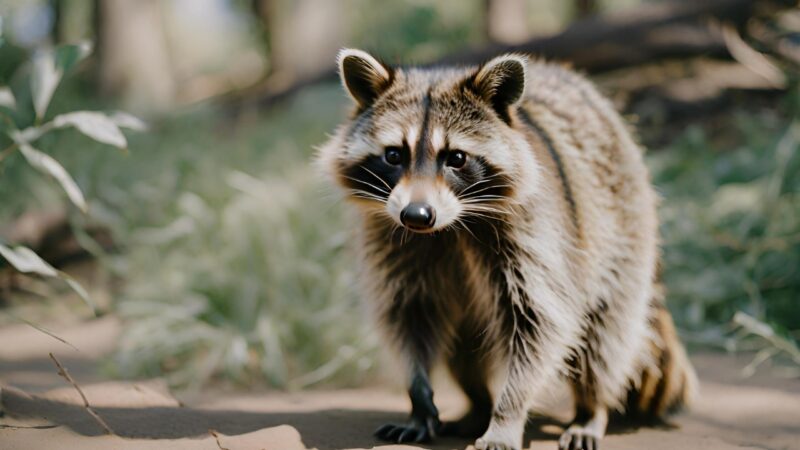Raccoons, often seen as mischievous and cunning creatures of the night, have piqued human curiosity with their diverse vocalizations.
With over 200 different sounds in their vocal repertoire, understanding the nuances of raccoon communication offers fascinating insights into their behavior and social interactions.
Today, we will talk about raccoon sounds, exploring their meanings, variations, and significance in both urban and wild environments.
Key takeaways:
- Diverse Vocal Range: Raccoons possess a rich vocal repertoire with over 200 different sounds, each serving specific purposes like communication, expressing emotions, and responding to environmental cues.
- Behavioral Indicators: The various sounds made by raccoons, such as growling, hissing, purring, and screaming, indicate their emotional states and behaviors, from contentment to distress or aggression.
- Urban vs. Wild Settings: Raccoon vocalizations can differ in urban settings due to adaptation to human presence and noise pollution, affecting the frequency and nature of their sounds.
- Human-Raccoon Interaction: Knowing raccoon sounds is essential for identifying their presence in human habitats, which can aid in preventing conflicts and facilitating coexistence, which is harder than with raccoons that live in forests.
- Health and Safety Significance: Vocalizations can be indicators of raccoon health and safety, helping in early detection of potential risks like rabies or property damage due to their scavenging habits.
The Vocal World of Raccoons
Raccoons are not just scavengers but complex communicators. Their vocalizations range from growls, chittering, hisses, purrs, coos, screams, mews, and whines, to barks.
Each sound serves a specific purpose, revealing their emotions, intentions, and responses to the environment.
Growling – A Sign of Displeasure
Growling is typically a response to anger or danger. This deep, guttural sound is a warning to others, signaling discomfort or territorial defense.
Chittering – The Interaction
Chittering is a common sound for communication, especially during social interactions. This rapid, high-pitched sound is akin to birds’ chirping and indicates active engagement among raccoons.
Hissing – A Warning Signal
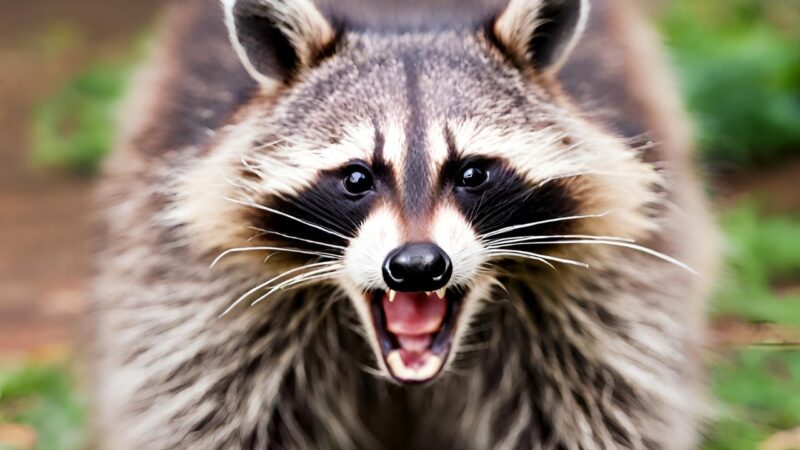
When threatened, raccoons hiss, a sound familiar to many animals. This sharp, aggressive noise serves as a clear warning to potential threats or competitors.
Purring and Cooing – Sounds of Contentment
Interestingly, raccoons also purr and coo, similar to cats, often indicating happiness or contentment. These gentle, soothing sounds are typically heard during peaceful interactions or when they feel safe.
Screaming and Screeching – Vocalizations of Distress
Screams and screeches are alarming sounds, usually indicating distress or pain. These loud, harsh cries are a call for help or a reaction to a threatening situation.
Mewing and Whining – The Voice of the Young
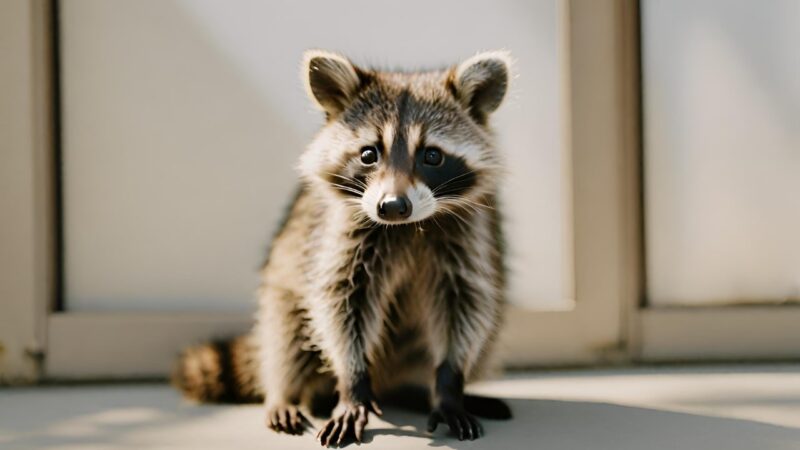
Baby raccoons, known as kits, communicate with their mothers through mewing and whining. These soft, plaintive sounds are essential for their survival, signaling hunger or the need for protection.
Barking – An Expression of Excitement or Stress
Barking in these animals, though not as common as in dogs, is a sign of excitement or stress. This sharp, abrupt sound can indicate a range of emotions, from curiosity to anxiety.
Raccoons in Urban Settings
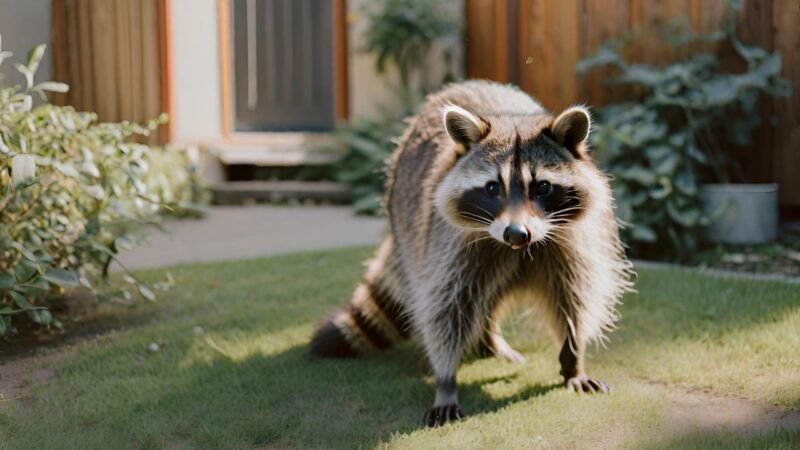
The Scavenging Song
In urban environments, these animals have adapted their vocalizations to navigate the human-dominated landscape.
The sounds associated with scavenging, such as rustling, scratching, and gnawing, are often heard in backyards, trash cans, and attics.
These noises, while not vocal, are integral to the raccoon’s communication repertoire, signaling their presence and activities.
Adapting to Human Presence
Raccoons in cities may exhibit different vocal patterns compared to their wild counterparts.
The constant human presence and noise pollution can influence the frequency, pitch, and volume of their sounds.
The Significance of Raccoon Sounds
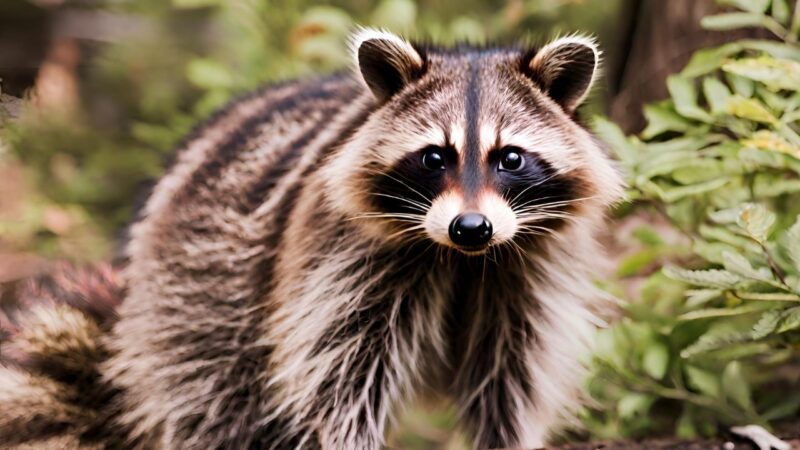
Behavior
Deciphering the sounds of raccoons is key to understanding their behavior.
Their vocalizations provide insights into their social structure, mating rituals, territorial disputes, and parental care.
This knowledge is crucial for wildlife biologists and enthusiasts alike.
Interactions With Humans
Recognizing raccoon sounds can also be beneficial in managing human-raccoon interactions.
For instance, identifying distress calls can alert homeowners to potential problems, like a trapped or injured raccoon.
Coexistence and Conflict Resolution
Having knowledge about raccoon vocalizations can aid in conflict resolution.
For example, recognizing aggressive sounds can help people avoid encounters that might lead to aggression or injury.
Indicators of Health and Safety
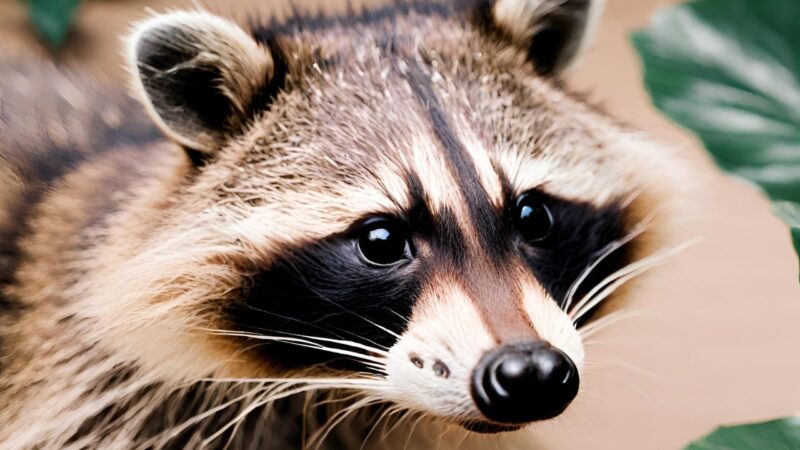
Health Concerns Linked to Sounds
The variety of sounds made by raccoons also serves as an indicator of their health.
For example, unusual vocalizations, like continuous growling or screeching, might suggest distress or illness, such as rabies.
Knowing these sounds helps identify potential health risks not only to the raccoons but also to humans and pets in close proximity.
Safety and Damage Prevention
Recognizing raccoon sounds is crucial for homeowners. Sounds like rustling, scratching, and gnawing in attics or crawlspaces often indicate a raccoon’s presence.
Early detection can prevent significant damage to homes and reduce the risk of conflicts between raccoons and humans.
Coexisting with These Animals
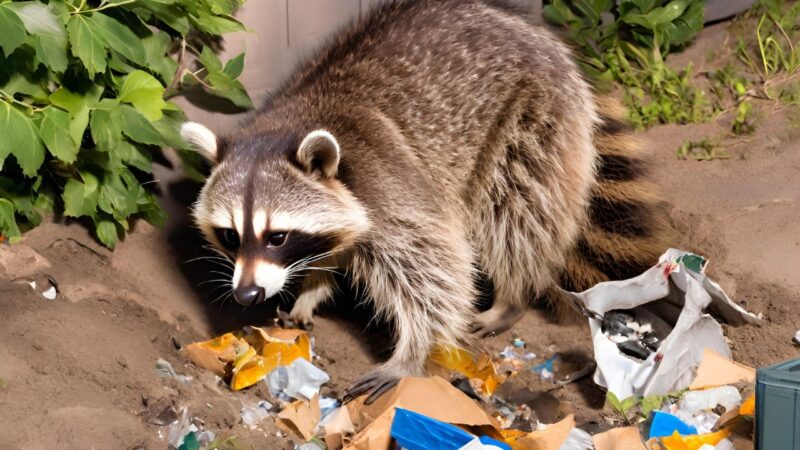
Both raccoons and possums are attracted to food waste.
Securing garbage cans and compost bins is essential to discourage their scavenging in residential areas.
This not only reduces the likelihood of encountering these animals but also helps in controlling their population in urban settings.
Creating Safe Spaces
Providing nest boxes for possums can encourage them to stay away from human dwellings while still benefiting from their role as scavengers and pest controllers.
Similarly, having knowledge about raccoon behavior can aid in creating environments where they can coexist with humans without conflict.
Protecting Gardens and Property
Using wire mesh to protect gardens is an effective way to coexist with these creatures.
It keeps possums away from plants they might damage while allowing them to play their role in the ecosystem.
Similarly, securing entry points to homes and buildings can prevent raccoons from causing damage.
Raccoons and Possums as Part of Urban Ecosystems
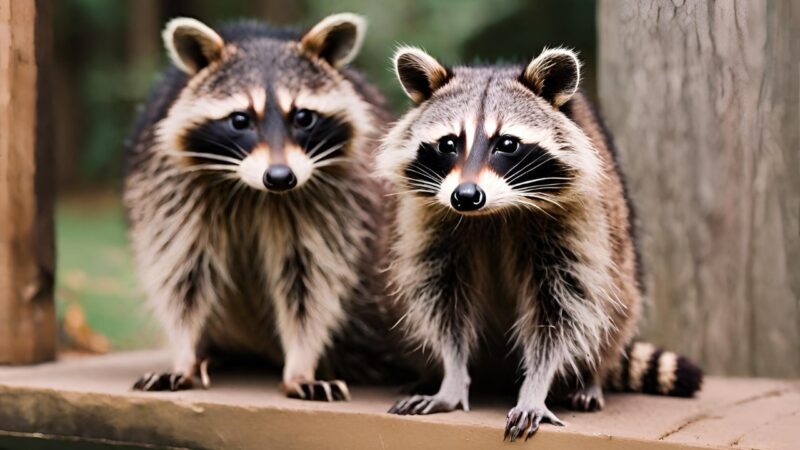
Raccoons and possums play significant roles in urban ecosystems.
Their scavenging habits help in waste control, and their presence can indicate the health of urban wildlife.
Understanding their sounds and behaviors contributes to a broader knowledge of urban ecology and the complex interactions between wildlife and human environments.
FAQs
Can raccoons mimic human sounds or other animal noises?
They are not known to mimic human sounds or other animal noises. Their vocalizations are unique to their species and are used for specific communication needs.
Do raccoons make different sounds during mating season compared to other times?
Yes, they may exhibit unique vocalizations during mating season, such as more frequent and varied calls to attract mates or establish dominance.
Can the age of a raccoon be determined by its sounds?
It is challenging to determine the exact age based solely on the animal’s sounds. However, baby raccoons (kits) have distinct mewing and whining sounds that are different from adults.
Are raccoon sounds the same across different geographical regions?
While the basic types of sounds are consistent, there can be slight variations in frequency, pitch, and intensity based on geographical regions and local environments.
Do raccoons use sounds to communicate with other species?
They primarily use sounds to communicate with other raccoons. There’s no conclusive evidence to suggest they intentionally communicate with other species through vocalizations.
How do raccoons’ nocturnal habits affect their vocalizations?
As nocturnal animals, they are more vocal at night. Their sounds are often amplified in the quiet of the night, making them more noticeable to humans.
Final Words
Raccoons, with their diverse array of sounds and possums, with their unique behaviors, are fascinating examples of urban wildlife adaptation.
Knowing the sounds and behaviors of these animals allows us to foster a more harmonious coexistence, mitigate potential conflicts, and appreciate the intricate balance of nature even in our backyards.
Keep in mind that the symphony of raccoon vocalizations is not just a matter of curiosity but a window into the lives of these intelligent and adaptable creatures.
Related Posts:
- What Sounds Do Opossums Make? - Identify and…
- What Sounds Does A Chipmunk Make: Study In Animal…
- What Sounds Do Squirrels Make? - From Bark to Whistle
- What Sounds Do Moose Make? - A Wildlife Expert Answers
- What Do Raccoons Eat? - How Their Diets Overlap and Differ
- What Are the Predators of Eagles? -Surprising…


